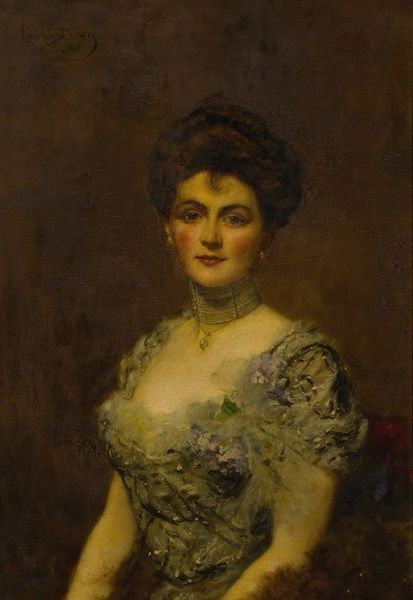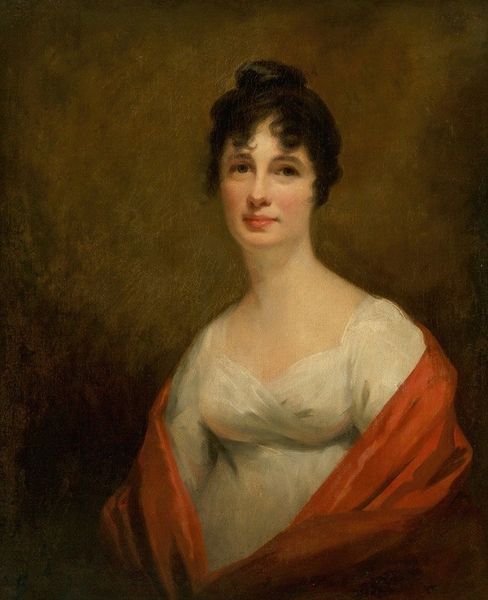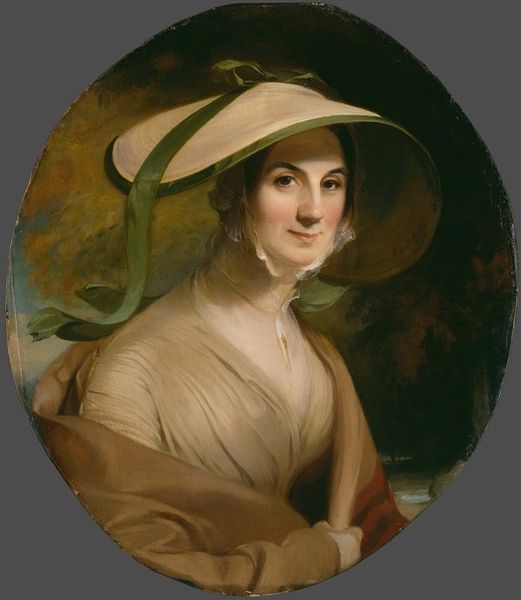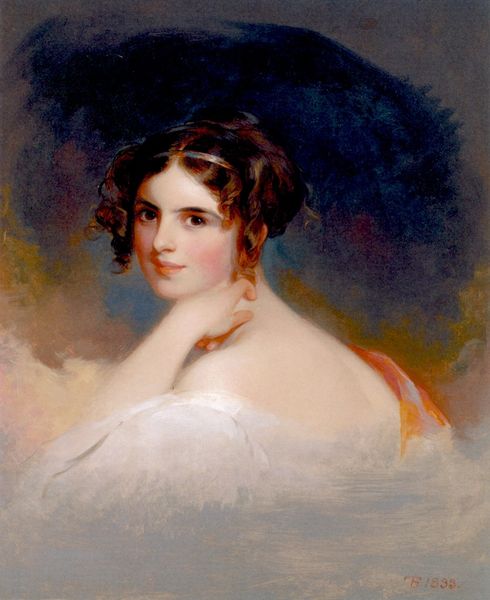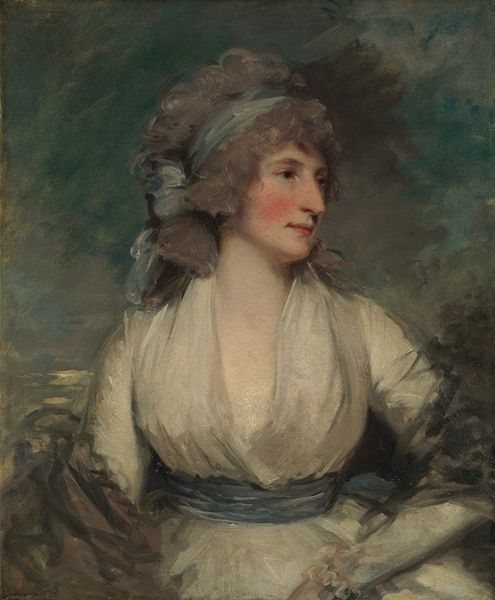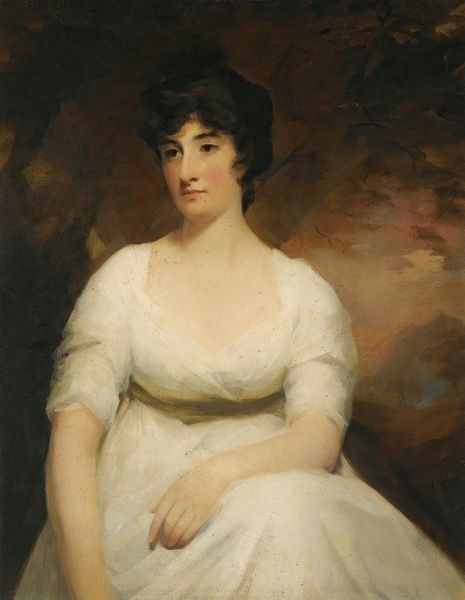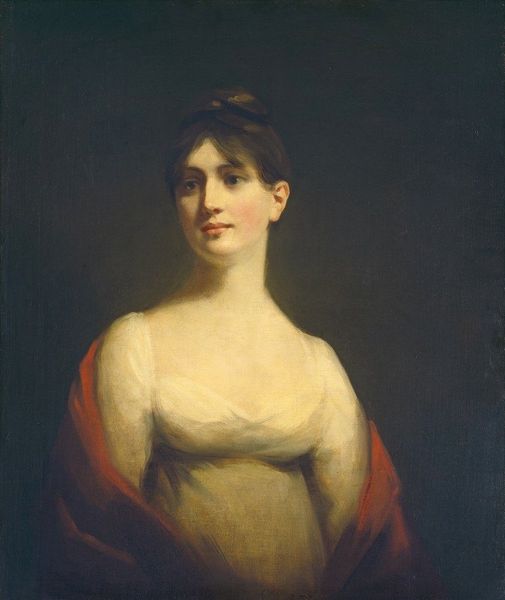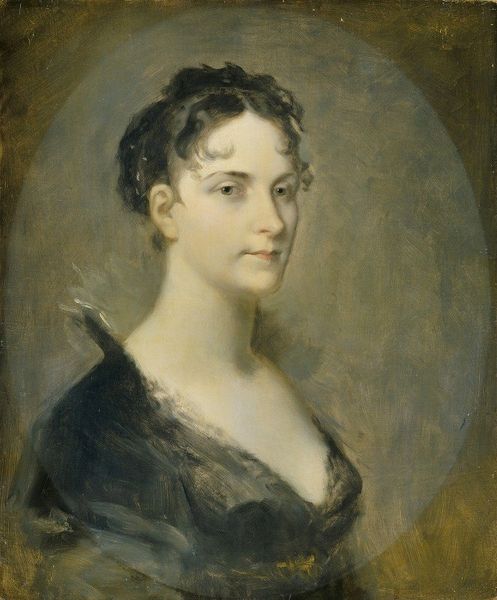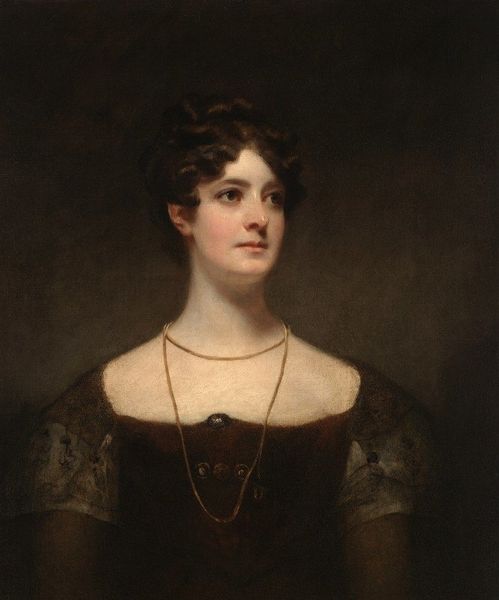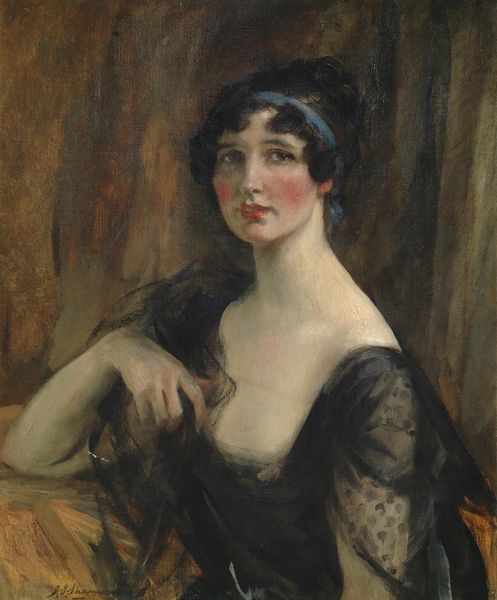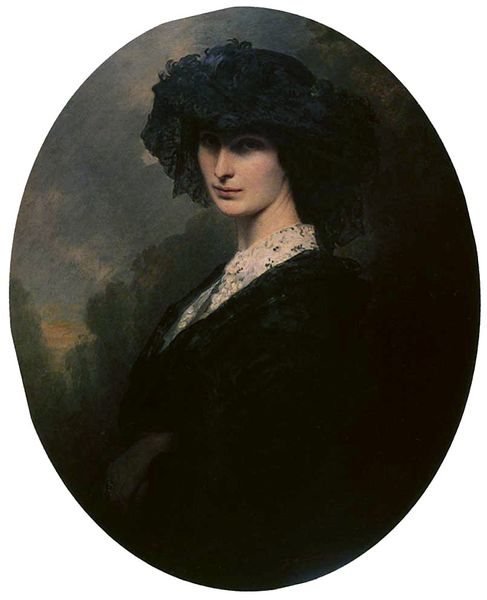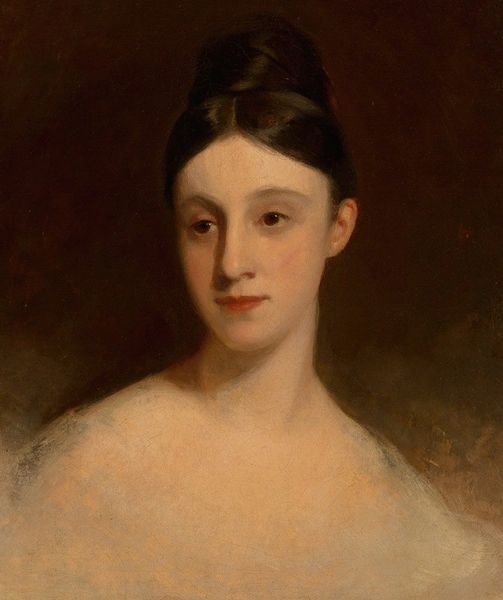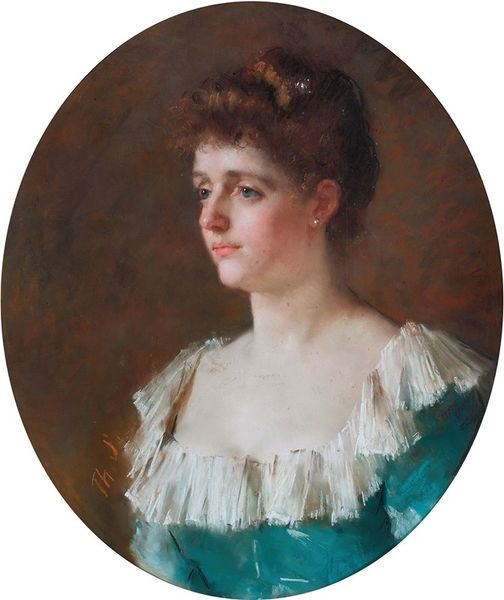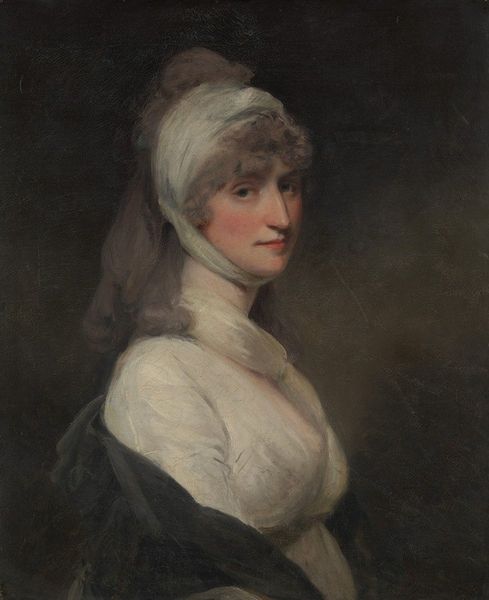
painting, oil-paint, impasto
#
portrait
#
portrait
#
painting
#
oil-paint
#
impasto
#
romanticism
Copyright: Public Domain: Artvee
Curator: Here we have "Portrait of Mrs. Blair" by Sir Henry Raeburn. Editor: She has an air of quiet dignity. The subtle gradations of light across her face and dress really do make her appear almost ethereal. Curator: Indeed. Raeburn, known for his impasto technique using thick layers of oil paint, positioned Mrs. Blair in a style aligning with the late 18th-century Scottish Enlightenment ideals of rationality and grace. We must also understand how this positioning served Raeburn's commercial needs in that specific time. Editor: I agree it aligns with those values, but seeing her poised and almost demure gaze prompts me to wonder: what narratives are suppressed here? What constraints did women of her status face, shaping their representation in art and life? Was her life as serene as Raeburn would have us believe? Curator: It’s critical to note the cultural context of portraiture during that era, in particular within the British Aristocracy. Portraiture cemented status and projected ideals deemed respectable, regardless of individual realities. Raeburn became successful catering to what his patrons wanted reflected back at them. Editor: I recognize the power structures embedded within such commissions. While this painting presents beauty, it also signifies a society that, I’d wager, stifled female expression in so many arenas. Looking closely, the slight tension in her jaw almost hints at an interior complexity beyond social expectation. Curator: A keen observation. These details are always influenced and shaped by social norms and economics of the era. The artwork is a result of several negotiations happening behind the scenes in addition to aesthetic choices. It stands as a artifact of a society and its artistic conventions. Editor: Absolutely. Seeing art from previous centuries should serve as a lens, focusing in turn on both artistic vision, but equally on social and political constraints of gender and class. Hopefully it makes us re-evaluate contemporary societal systems of control as well. Curator: Exactly! To study these works is to truly acknowledge art's public role and to question imagery as constructed, never wholly transparent. Editor: Beautifully stated; that has given me an enhanced awareness about the necessity of multifaceted analyses.
Comments
No comments
Be the first to comment and join the conversation on the ultimate creative platform.
